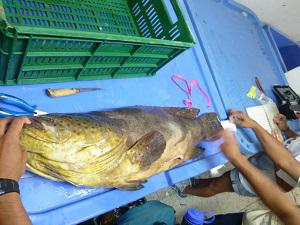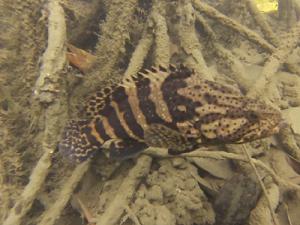Carolina Chong Montenegro
This project aims to assess the life history, population status, and fishery sustainability of the Pacific Goliath Grouper in and around a marine reserve on the Pacific Coast of Colombia.

The conservation status of the Pacific Goliath Grouper (Epinephilus quinquefasciatus) is currently listed by the International Union for the Conservation of Nature (IUCN) Red List of Threatened Species as “data deficient” due to minimal species-specific landing data, and a complete lack of fishery-independent abundance, distribution, and life history data. Moreover the Pacific Goliath Grouper, also known as ‘mero’ in Colombia, is classified as “critically endangered” by the Colombian Red List of Marine Species due to its high market demand and poor knowledge of its biological characteristics. The mero is a focus of conservation for the Utría National Park, therefore baseline studies are urgently needed to implement management strategies for this resource.

This project aims to provide meaningful information about the natural history and current population status of juvenile and adult mero in and around Utría Ensenada (a Marine Protected Area) by addressing the following questions:
1- Does the MPA serve as a nursery habitat for juveniles of mero?
2- What is the density, abundance, growth, and habitat preference of the mero in the MPA?
3- Have landings fluctuated historically and how does this relate to sustainability?
4- How can the mero still offer a source of income within marine reserves (i.e. ecotourism)?
Initially, my work will provide key information of age structure data for reliable estimates of growth rates, mortality, and recruitment from the fish sampled inside and outside the MPA. These estimates are necessary to predict the response of the population to fishing pressure. Growth curves (created by analysis of non lethal-age estimations and otolith readings) and spatio-temporal distribution dynamics will deliver valid information for management purposes, and test the effectiveness of the MPA. This information will be complemented by historical landing data to reveal an overview of current exploitation rates and possible population trends. Moreover, this work will address the importance of marine reserves for the mero as critical refuges for adults and juveniles.
Overall, my work will deliver meaningful conclusions about the natural history, state of stocks, and economic importance of E. quinquefasciatus in the outer and inner zones of the Utría National Park, and will also contribute information about trends in spatial-temporal abundance and comprehensive biomass estimations. Together this information will be essential for local fisheries management and general marine ecosystem knowledge.